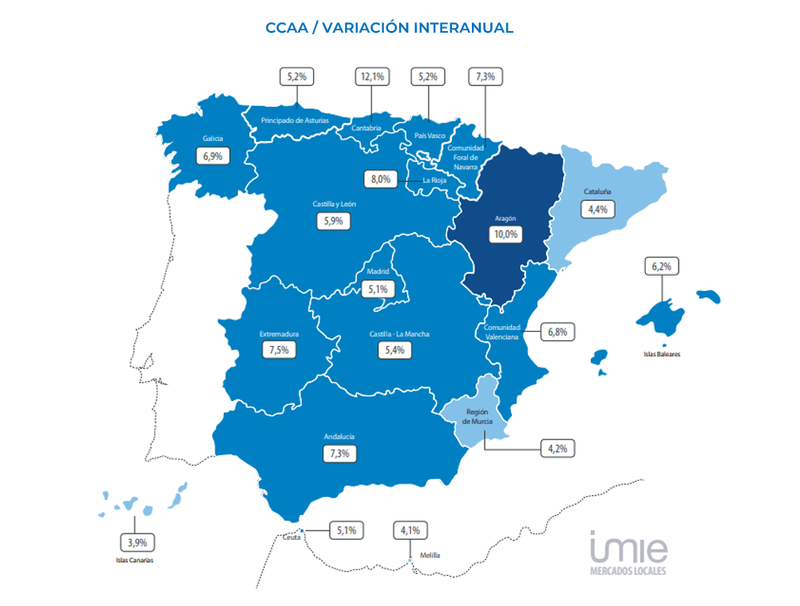The year has started with a general slowdown in the growth of finished housing prices (new and used). According to the IMIE Local Markets statistics, based on valuations carried out by Tinsa, the average value in Spain recorded a year-on-year increase of 6.3% in the first quarter of 2023, after rising by 0.9% since the fourth quarter of 2022 (quarter-on-quarter rate). The figure confirms the trend of price stabilisation observed in the first months of the year and represents a clear moderation compared with the quarterly increases of 2.2 % and 2.1 % recorded in the fourth and third quarters of 2022, respectively.
"The normalisation of the volume of home sales and purchases continues, which are returning to their historical average, lower than the strong acceleration in activity experienced between the second half of 2021 and the first half of 2022, but still at robust levels", says Cristina Arias, Director of Tinsa's Research Department.

VALENCIA IS THE PROVINCIAL CAPITAL WHERE HOUSE PRICES HAVE RISEN THE MOST (+10.4%).
In the coming months, prices are expected to continue to slow down, with a tendency towards stabilisation as a result of reduced financing and moderating demand. Among the indicators that maintain confidence in the residential market in Spain, Cristina Arias highlights that household and corporate debt is at balanced levels with respect to GDP, that general employment rates are maintained, sustaining the solvency of families, and that the doubtfulness associated with loans for the purchase of housing is at low levels and continued to reduce in the last quarter of 2022.
In addition to the economic uncertainties of recent months, problems in some banks in the US and, to a lesser extent, in Europe have recently been added, opening up the possibility of further credit tightening by financial institutions. "This situation could lead to a reduction in the growth forecasts for the economy to date, which would negatively affect the demand for replacement housing, although it could be positive for investment in real estate," explains Cristina Arias. Currently, only 49% of all transactions have a mortgage associated with them, indicating that housing continues to channel savings in an environment of economic uncertainty.
The average price in Spain has increased by 34.2 % since the minimum recorded during the financial crisis, in the third quarter of 2015, and is 20.8 % below the peak reached during the real estate boom, in the fourth quarter of 2007.
Autonomous regions
The growth of new and used house prices at regional level maintained high percentages in the first quarter, although lower than in previous months, with practically flat quarterly variations. The bulk of the Autonomous Communities recorded year-on-year increases of between 4% and 6%, as is the case of the Community of Madrid (+5.1%) and Catalonia (+4.4%). According to Tinsa's valuations, the greatest dynamism in the last 12 months corresponds to the regions of Cantabria (+12.1%), Aragon (+10%), La Rioja (+8%) and Extremadura (+7.5%).

Y-O-Y variation by autonomous community - TINSA
The quarterly variations reduced their intensity in this first quarter, the bulk of them being around -0.1 % and 1 %. Navarre stands out with the most recent growth, reaching 5.6 %.
Prices continue to move progressively away from the minimum values resulting from the financial crisis. The Community of Madrid (+59.4%) is the furthest away from this floor, followed by Catalonia (+43.9%) and the Balearic Islands (+40.5%). At the opposite extreme, housing in Melilla, the Region of Murcia, Extremadura and Galicia has appreciated by less than 15 % since the respective lows recorded in the previous cycle.
The average value in the Balearic Islands is only 1.4% below the 2007 highs reached during the bubble, making it the region with the greatest price tension. The next region with the smallest difference is Madrid: -11.6%. At the other extreme, in four autonomous communities (Castilla-La Mancha, Murcia, La Rioja and Aragón) the gap exceeds 30%.




